Temperature development and clock rates
Both are also indirectly linked and so we first look at the warm-up phase and the boost rates achieved. But stop! Has the manufacturer not specified a boost clock of 1203 MHz? In the course of the gaming loop, the Marte reaches only once the 1183 MHz of the reference target and otherwise drops from only 57°C to an average of 1141 to 1164 MHz despite maximum temperatures. So the factory OC is actually none at all and it is up to Power Tune that it is no longer possible here.
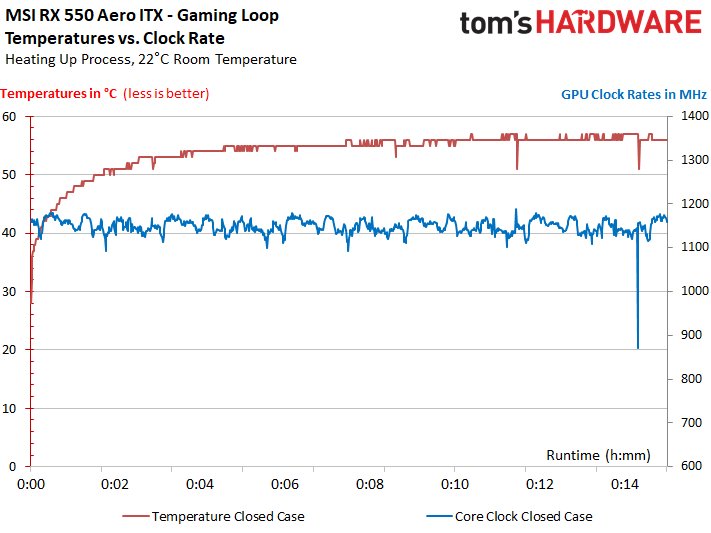
This becomes even clearer in the stress test, because it hardly reaches 820 MHz on average. This is far below the collated base clock of the reference of 1100 MHz. But one keeps the self-presented 50 watts of power consumption at least meticulously, after all. Temperatures are almost identical to the gaming loop
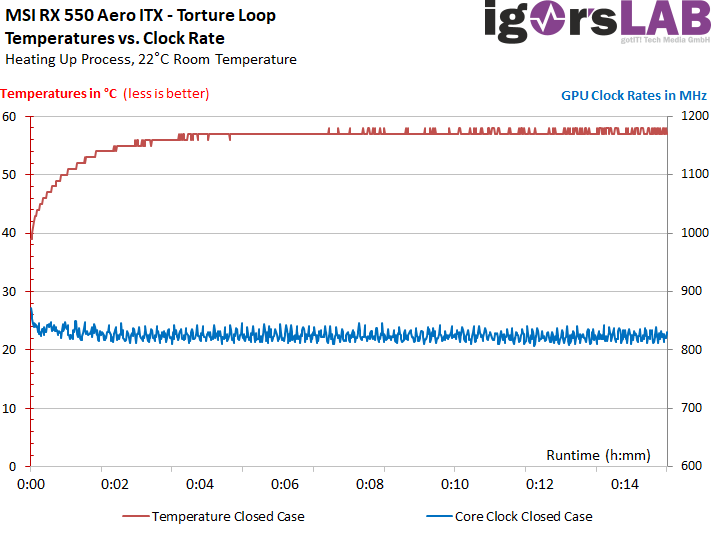
Infrared analysis of the board
Now let's look at the board after warming up in the closed housing. With about 57°C at the base, the temperatures are almost where the GPU diode thinks it is. The rest is cool enough to never shoot significantly beyond the 60°C mark even in one place. That fits.
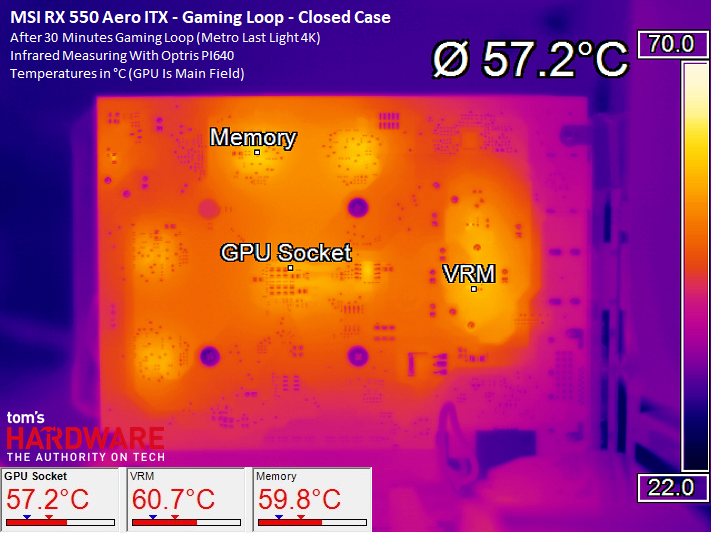
In the stress test, only the memory gets a little hotter, with warmer certainly the fairer term. Because this is really not suitable for roasting tubes. Despite the lack of active cooling, the RAM remains cool enough. Only for a nice sous-vide-cooking it is now 1-2 degrees too hot.
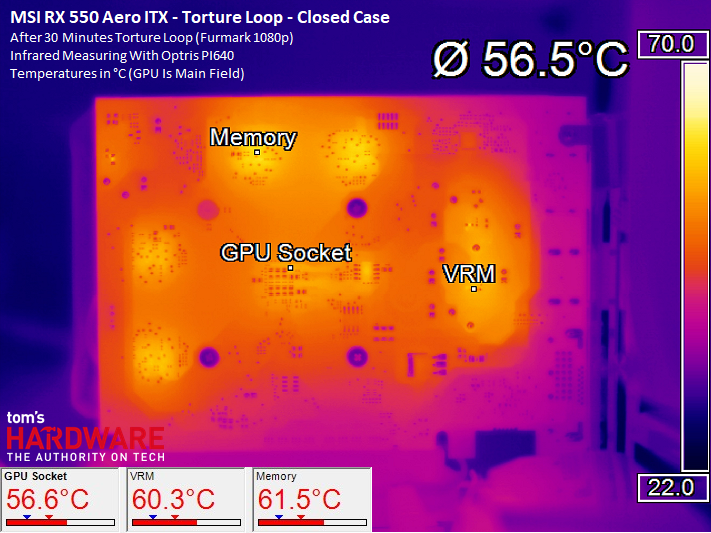
Fan curves and "volume"
First of all, one will have to ask: which curves? The fan is running and running… Just not slower and hardly faster. Much more than the approx. 1600 rpm in the idle, it will not be even under load and funnily enough only once short. Then, despite the full load, the dreary everyday life returns. But then one can ask why MSI has to produce the same winter storm in the Idle, which is also sufficient for the maximum load of the GPU.
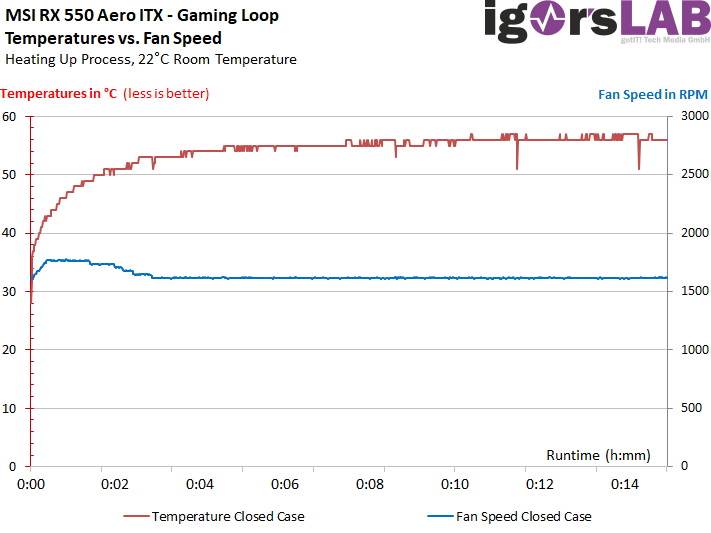
This then continues with the stress test. The fact that the curve has been messed up can also be seen in the minimum speed of 25%, which allows speeds of just under 1500 rpm. Even that is still pointless, but already much quieter. The fans would still start safely at 20%, but that would be a BIOS update.
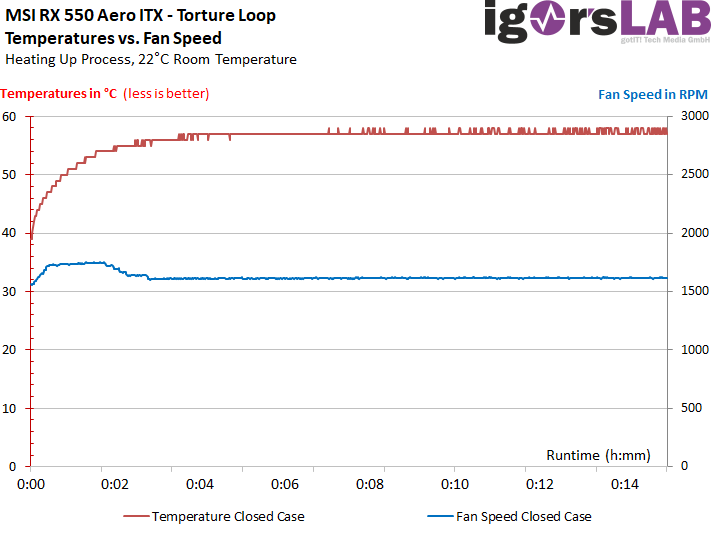
The penalty follows on the foot, because a plentiful 36 dB(A) read not badly at first, but for such a winnz card are almost hurricane volume. A little optimization would be necessary here, because coolers and fans are not so bad.
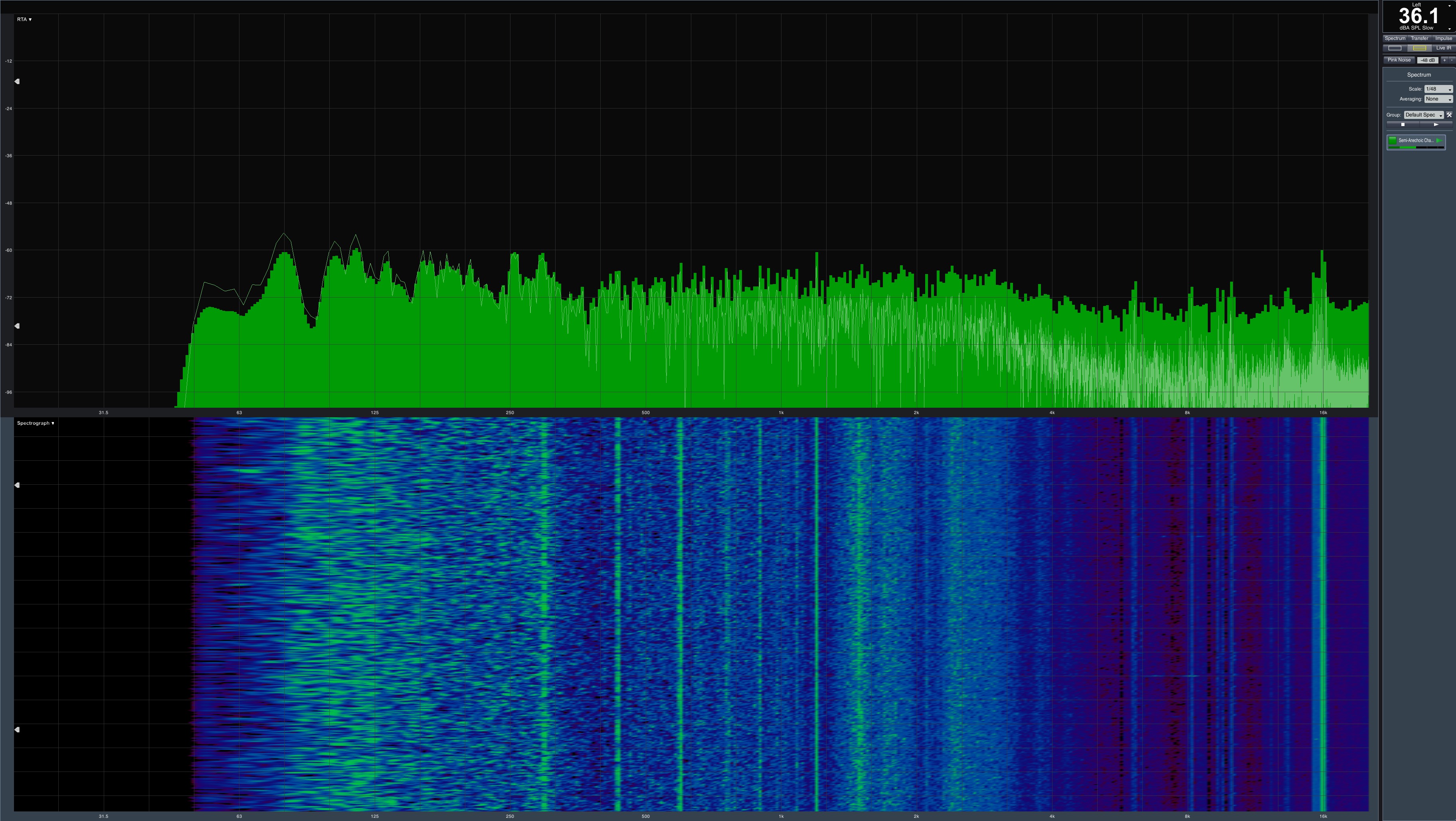
And so it remains to be summarized that the card stays cool enough and still has a problem with keeping the maximum clock. The culprit is called Power Limit and sits not only in the firmware, but also in the marketing department, which seems to be scrubling the 50 watts from the presentation into the brain again and again. With a few watts more you could certainly have lived, a pity
































Kommentieren